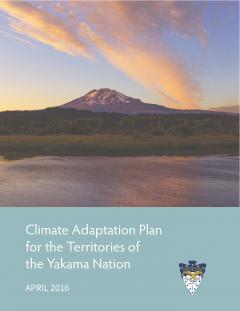
Our climate is changing. The effects of climate change are being noticed by our own people. These changes, coupled with the rapid growth of cities throughout our homelands; dams across our rivers; and unsustainable forestry, rangeland, and agricultural practices have drastically altered our traditional way of life, our foods, and many aspects of our heritage and culture. From the vast information now available concerning climate change, we understand that its impacts on our natural resources will continue and that our grandchildren will likely see profound and ever-increasing changes within their lifetimes.
The issues in front of us are not unique to just the Yakama Nation, but can be seen across all Indian nations. Although we find ourselves at a tipping point, it is not a time to decry our losses and bemoan our future. We will work with other tribes, and we will learn together. We must learn how to adapt, as we have done for many thousands of years on these lands which have always been our home.
We cannot know and anticipate at this time all changes to come—but we can start. Contained within these pages is the Yakama Nation Climate Adaptation Plan. This Plan provides a strong foundation for our next steps and sets them into motion. This Plan is more than just words and pictures. It describes much of our understanding of potential climate change impacts and establishes preliminary recommendations for our tribal programs to consider and evaluate and for our tribal leadership to act upon appropriately.
The Yakama Nation Tribal Council directs all of our community and natural resource programs to carefully assess the vulnerabilities and risks identified in this Climate Adaptation Plan over the next year. In many cases, these considerations will go beyond our reservation lands and necessitate an evaluation of resources throughout the territories of the Yakama Nation. We also direct our programs to prepare and present recommendations for addressing the vulnerabilities and risks—actions that will rebuild resilience and durability within these resources for generations to come. These assessments and recommendations are not intended to be comprehensive, but they represent a substantial beginning on a long path forward.
